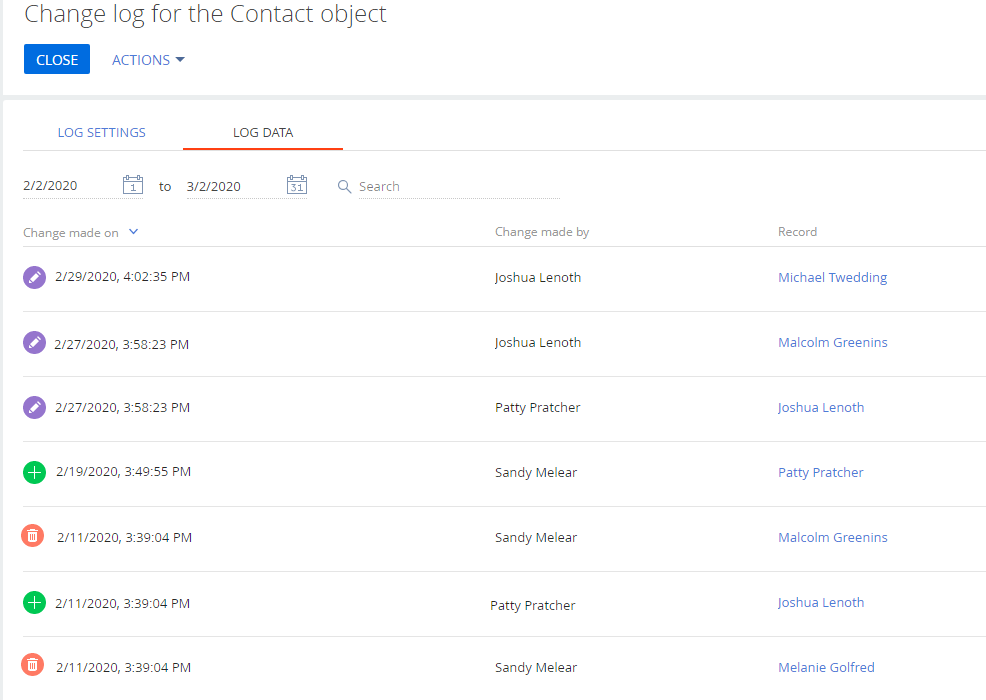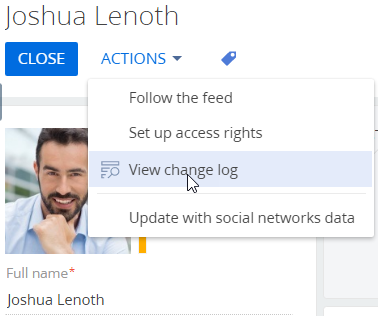When working with Creatio, you may need to view the changes made to your data and see who made these changes and when. For example, you can check which contact records were changed last month.
The data change history is available in the Change log section (Fig. 1).
The change log contains information about adding, modifying, and deleting records (entries) in the database tables for Creatio objects. This includes sections, details, lookups, as well as other objects.
There are two ways you can open a change log for viewing its records:
-
Open the Change log section from the System Designer and select an object to view its logs
-
Open the change log of a specific record directly from the record page.
Method 1. View the record changes from the change log
-
Open the System Designer, e.g., by clicking
 .
. -
Under Users and administration, click Change log.
-
Set the filter - for our example, select “Sections”.
-
Find the needed object using the search bar or manually. In our example, we use the “Contact” object. Click the object title to open the change log page.
-
Click the Log data tab and set the date filter (Fig. 1). In our example, it is the time period from February 2nd to March 2nd, 2020.
As a result, the list of records that were changed within the specified period will be displayed (Fig. 2). The icons next to dates display the type of the performed operations: deleting, adding or editing.
-
Use the search bar to quickly find the needed record by title. In our case - by the contact’s full name (Fig. 3). To learn the details of the performed changes, click the name in the Record column.
Method 2. View logs of a specific record directly from the record page
-
Open the page of the needed record.
-
Click Actions → View change log (Fig. 1).
-
The page that opens will display information about the selected record:
-
dates of the changes
-
authors of the changes
-
record name
-
list of the changed columns
-
values before the change
-
values after the change
-
-
Set the date filter to display only the changes for the last month. (Fig. 2). In our example, it is the time period from February 2nd to March 2nd, 2020.
As a result, you will see the changes that were made in the logged fields within the specified period (Fig. 3).






